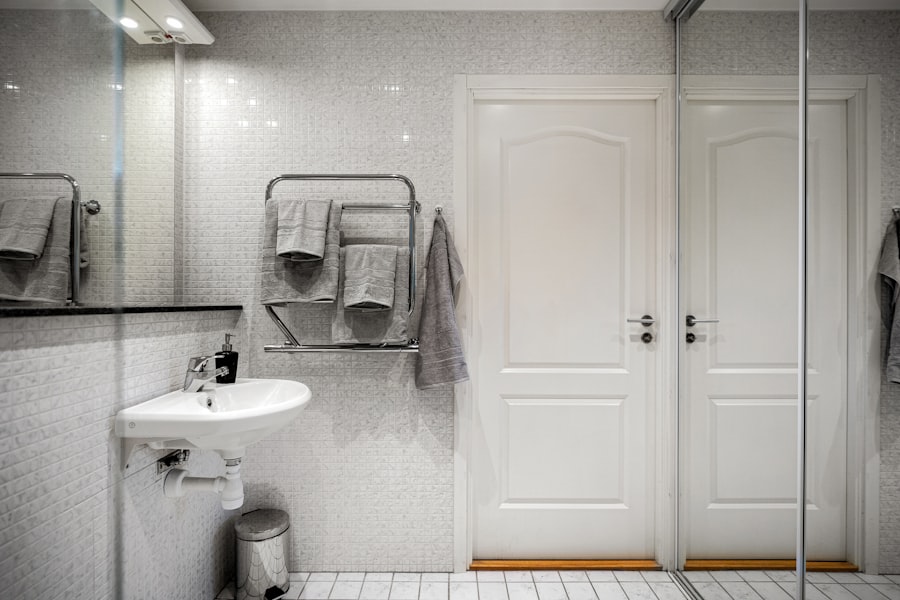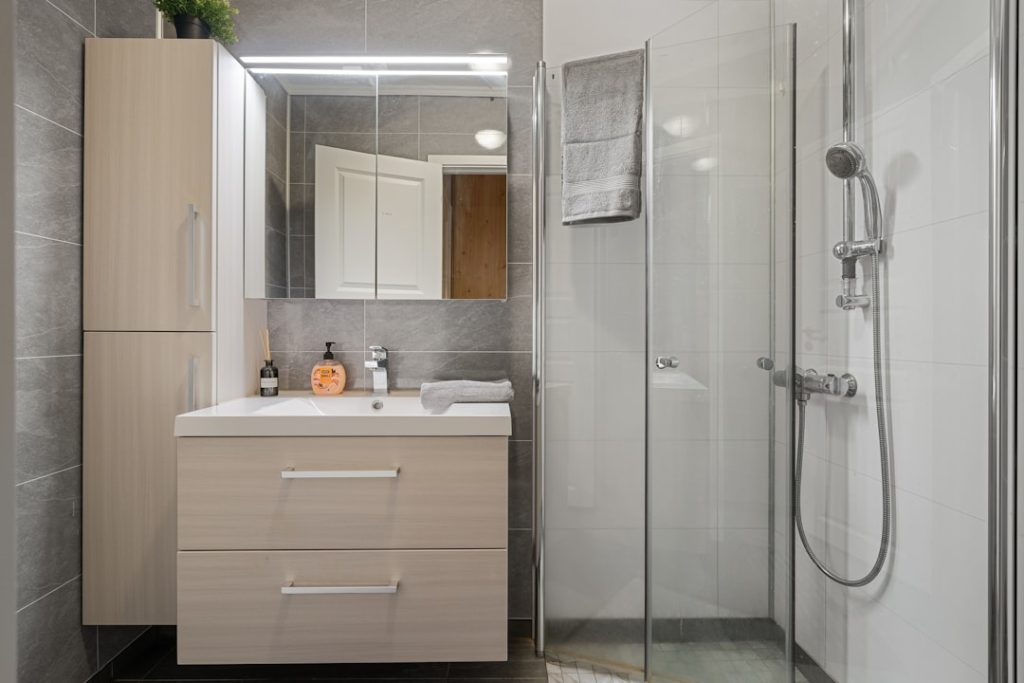The average cost of a bathroom remodel can vary significantly based on a multitude of factors, including the size of the bathroom, the extent of the renovations, and the quality of materials chosen. As of 2023, homeowners in the United States can expect to spend anywhere from $6,000 to $15,000 for a mid-range bathroom remodel. This price range typically includes essential updates such as new fixtures, cabinetry, flooring, and possibly a fresh coat of paint.
However, for more luxurious renovations that involve high-end materials or extensive structural changes, costs can soar to $25,000 or more. Understanding these figures is crucial for homeowners contemplating a remodel. The average cost can serve as a benchmark, but it is essential to recognize that individual circumstances will dictate the final price tag.
For instance, a small powder room may require less investment than a master bathroom with a soaking tub and dual vanities. Additionally, regional differences can also play a significant role; urban areas often see higher labor costs compared to rural locations. Therefore, it is vital to conduct thorough research and gather multiple estimates to gain a clearer picture of what your specific project might entail.
Key Takeaways
- The average bathroom remodel cost can range from ,000 to ,000, depending on the scope of the project and the quality of materials.
- Factors that influence the cost of bathroom remodeling include the size of the bathroom, the quality of materials, and the complexity of the design.
- Setting a realistic budget for your bathroom remodel involves carefully considering your financial situation and prioritizing your needs and wants.
- When estimating the cost of materials and labor, it’s important to account for potential price fluctuations and unexpected expenses.
- Hidden costs to consider when remodeling your bathroom include permit fees, structural repairs, and the cost of temporary accommodations if the bathroom is unusable during the remodel.
Factors that Influence the Cost of Bathroom Remodeling
Several key factors influence the overall cost of a bathroom remodel, and understanding these can help homeowners make informed decisions. One of the most significant factors is the scope of the project. A simple cosmetic update—such as changing out fixtures and repainting—will naturally cost less than a full-scale renovation that involves moving plumbing or electrical systems.
Homeowners should carefully consider what changes they want to make and how those changes will impact their budget. Another critical factor is the choice of materials. High-quality materials such as granite countertops, custom cabinetry, and designer tiles can dramatically increase costs.
Conversely, opting for more budget-friendly alternatives like laminate countertops or vinyl flooring can help keep expenses in check. Additionally, labor costs can vary widely depending on the complexity of the work and the experience level of the contractors involved. Hiring specialized tradespeople for plumbing or electrical work may incur higher costs but can ensure that the job is done correctly and safely.
Setting a Realistic Budget for Your Bathroom Remodel

Setting a realistic budget is one of the most crucial steps in planning a bathroom remodel. Homeowners should begin by determining how much they are willing to spend and what their financial limits are. It is advisable to allocate around 20% of the total budget for unexpected expenses that may arise during the renovation process.
This cushion can help mitigate the stress of unforeseen issues such as water damage or structural problems that may not be visible until work begins. In addition to setting a budget, homeowners should prioritize their needs versus wants. For example, if a luxurious soaking tub is desired but not essential, it may be wise to allocate funds toward more critical updates like plumbing or electrical work first.
Creating a detailed list of must-haves versus nice-to-haves can help streamline decision-making and ensure that essential elements are not sacrificed for luxury items that may not significantly enhance the overall functionality of the space.
Estimating the Cost of Materials and Labor
| Item | Cost |
|---|---|
| Materials | 500 |
| Labor | 800 |
| Total | 1300 |
Estimating the cost of materials and labor is an essential part of budgeting for a bathroom remodel. Homeowners should start by researching prices for various materials they are considering. For instance, ceramic tiles can range from $1 to $15 per square foot depending on quality and design, while natural stone tiles may cost even more.
Similarly, fixtures such as faucets and showerheads can vary widely in price; basic models may start at $50, while high-end designer options can exceed $500. Labor costs also play a significant role in the overall budget. On average, labor can account for 20% to 35% of the total remodeling cost.
Rates can vary based on geographic location and contractor experience. For example, hiring a licensed plumber may cost between $45 to $200 per hour depending on their expertise and your location. It is advisable to obtain multiple quotes from contractors to ensure competitive pricing while also considering their reputation and past work quality.
Hidden Costs to Consider When Remodeling Your Bathroom
When planning a bathroom remodel, homeowners must be aware of potential hidden costs that can arise during the renovation process. One common issue is plumbing or electrical upgrades that may be necessary to meet current building codes or accommodate new fixtures. If existing plumbing is outdated or if electrical systems cannot support new lighting or appliances, additional expenses will be incurred to bring these systems up to code.
Another hidden cost can stem from unforeseen structural issues discovered during demolition. For example, water damage behind walls or under flooring may require extensive repairs before any new materials can be installed. Additionally, permits and inspections may be required depending on the scope of work being done; these fees can add up quickly if not factored into the initial budget.
Homeowners should conduct thorough inspections before starting their remodel and consult with professionals to identify potential issues early on.
Tips for Saving Money on Your Bathroom Remodel

There are several strategies homeowners can employ to save money on their bathroom remodel without sacrificing quality or aesthetics. One effective approach is to focus on cosmetic updates rather than structural changes. For instance, instead of relocating plumbing fixtures, consider keeping them in their current positions while updating surrounding elements like cabinetry and countertops.
This approach can significantly reduce labor costs associated with plumbing work. Another way to save money is by shopping smart for materials. Homeowners should explore local home improvement stores for sales or clearance items and consider purchasing surplus materials from wholesalers or online marketplaces.
Additionally, opting for mid-range products rather than high-end luxury items can yield substantial savings while still achieving an attractive look. Finally, consider tackling smaller tasks yourself—such as painting or installing accessories—to further reduce labor costs.
The decision between hiring a professional contractor and undertaking a DIY approach is one that many homeowners grapple with when planning a bathroom remodel. While DIY projects can save money on labor costs, they also come with risks—especially if homeowners lack experience in plumbing or electrical work. Mistakes made during DIY renovations can lead to costly repairs down the line, potentially negating any initial savings.
On the other hand, hiring professionals brings expertise and efficiency to the project. Experienced contractors are familiar with local building codes and regulations, ensuring that all work is compliant and safe. They also have access to industry connections for sourcing materials at competitive prices.
Ultimately, the choice between DIY and hiring professionals should be based on individual skill levels, project complexity, and budget constraints.
How to Get the Most Value for Your Money in a Bathroom Remodel
To maximize value during a bathroom remodel, homeowners should focus on both functionality and aesthetics while keeping resale value in mind. One effective strategy is to invest in timeless design elements that appeal to a broad range of potential buyers. Neutral color palettes, classic fixtures, and durable materials tend to stand the test of time and remain attractive over the years.
Additionally, enhancing energy efficiency can add value without significantly increasing costs. Installing low-flow toilets and faucets not only conserves water but also appeals to environmentally conscious buyers. Furthermore, incorporating smart technology—such as programmable thermostats or motion-sensor lighting—can modernize the space while providing added convenience.
By carefully considering these factors and making informed decisions throughout the remodeling process, homeowners can achieve a beautiful and functional bathroom that enhances their living space while also providing long-term value.



